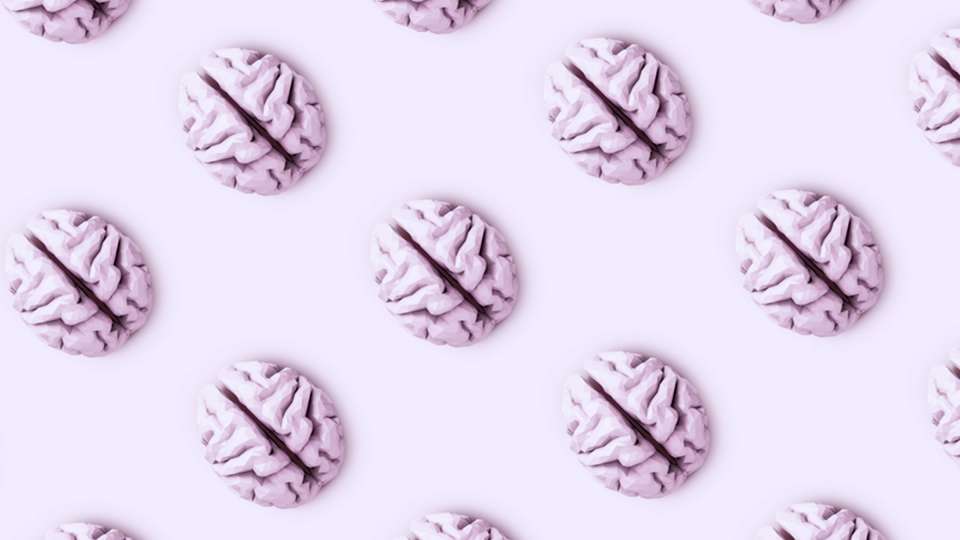
If you’re unsure about what it means for someone to have epilepsy, that’s totally OK. Unfortunately, it’s not as widely discussed as it should be.
Epilepsy can be complex, which can make it hard to understand. It’s a common condition that carries a huge stigma — largely because of the myths and misconceptions surrounding it.
Popular media has a unique way of inserting fear and judgment into the life experiences of people with epilepsy. Movie scenes overdramatize seizures, which perpetuates myths and increases negative stigma.
What causes epilepsy?
First, epilepsy is a chronic, neurological condition in which a person has recurrent seizures that aren’t provoked by other factors like a high fever, brain infection or metabolic problem (such as low blood sugar).
“The two important aspects here are ‘unprovoked’ and ‘epileptic,’” says Dr. Wolfgang Muhlhofer, a UW Medicine neurologist who specializes in seizures and epilepsy diagnosis. “In theory, any one of us can have a seizure. It’s just a matter of how sick we get or how much stress is put on our brains. ‘Epileptic’ means that the seizure is the result of abnormal electrical activity in the brain.”
Think of it like an electrical storm that swipes over the brain and causes involuntary activation of various brain regions. Seizures are caused by excessive firing of millions of brain cells (neurons) at the same time.
Now let’s debunk some myths about these seizures and living with epilepsy.
Myths about epilepsy
Myth: Seizures are always “dramatic”
The reality is: Different types of seizures can result in different symptoms, and not all are dramatic.
“The signs and symptoms we see during a seizure depend on what regions of the brain are affected by this electrical storm and whether the person stays aware during parts of the seizure,” says Muhlhofer.
The seizures we see in movies typically show the actor falling and shaking uncontrollably. These represent what are called grand mal seizures.
“There are seizure types that can make people shout out loudly, followed by thrashing, at times, violent, uncontrollable movements that make someone appear as if they might be intoxicated or having a temper tantrum,” says Muhlhofer. “But others can look like they are having a stroke, as they start talking gibberish, have difficulties expressing themselves, complain of ‘funny’ feelings or lose control over various body parts because of their seizure.”
Here’s a quick breakdown:
Grand mal seizures are the most common seizure types. Muhlhofer explains that you’ll typically see whole-body stiffening, often followed by rhythmic jerking and twitching. When the person having the seizure comes around, they’re often pretty disoriented.
Petit mal or absence seizures are the second-most common type.
“Someone who has an absence seizure typically just stops what they’re doing or stops talking mid-sentence and stares off into space,” says Muhlhofer.
After an absence seizure, the person will simply pick up where they left off without realizing what happened.
Focal onset seizures start in one particular part or region of the brain and are much more common in adults than kids. While it starts in one side of the brain, it can spread to other parts. Muhlhofer says that someone experiencing a focal onset seizure might see, hear, smell or taste things that aren’t there. These “partial” seizures are the most common in people with epilepsy.
Myth: A seizure requires an urgent trip to the emergency room
It’s often unnecessary to call 911 or take someone with epilepsy to the emergency department unless they injure themselves because of a grand mal seizure, the seizure lasts longer than three minutes or they are severely lethargic and unresponsive for 10 to 20 minutes following the seizure.
If someone has a seizure and they don’t have a known history of epilepsy, this is another situation where you should call 911.
Myth: You should hold someone down during a seizure
This myth is one of the most common — and could be one of the most dangerous. As a bystander, you might feel the need to restrain or guard a person in these situations, but that bares a risk of injury for you and the person going through the seizure.
“If someone is convulsing, turning them on their side to help their breathing makes it easier for any excessive saliva or blood to drain from their mouth,” says Muhlhofer. “Removing any sharp or restraining objects on their body or around them is the best and safest course of action.”
No one should ever put anything in the mouth of a seizing person. This can block their airway and actually worsen the outcome of a seizure.
“Following seizures, people can also appear very agitated, scared, confused, disoriented and even combative,” says Muhlhofer. “This is when it’s important to stay calm, redirect and reorient the person and try to keep them within a safe space.”
Myth: Epilepsy is untreatable
In fact, there are more than 30 prescription medications on the U.S. market to treat epileptic seizures, and more are constantly in development. For some, these medications allow some people to live seizure-free lives.
“There’s about a 64% chance for patients with epilepsy to achieve long-term seizure freedom on antiseizure medications alone,” says Muhlhofer. “If a specific antiseizure medication fails, then an add-on of a second or third medication provides an additional 11.6%-4.4% likelihood of seizure freedom, respectively.”
Myth: People with epilepsy can’t live normal lives
While epilepsy can be a disruptive condition, about two-thirds of patients with epilepsy experience long, seizure-free periods with just one antiseizure medication.
“People with epilepsy live very normal, productive and successful lives,” says Muhlhofer. “I have plenty of patients in leadership positions at larger corporations, healthcare professionals, artists, freelancers, construction workers or engineers.”
Muhlhofer explains that as long as you are seizure free for at least six months, you can drive and maintain your independence. “We’ve also learned a lot about the safety profile of antiseizure medications in pregnancy so that we can reduce the risk for the mother and the unborn child,” he says.
Myth: Epilepsy or seizures are an unmanageable, life-long condition
Muhlhofer suggests a deeper, careful look into this myth.
“It’s true that an epilepsy diagnosis made in adulthood tends to be a chronic medical condition that sticks with a person lifelong,” he says. “I’ve found that naturally occurring changes in our bodies, in particular hormonal changes, as well as changes in our lifestyle that tend to occur naturally over our lifetime, can affect how strongly that underlying tendency shows itself.”
Here’s an example: Women who used to have relatively predictable seizure clusters around their menstrual cycle could see a drastic reduction in seizure frequency as they transitioned into menopause.
“So, while epilepsy tends to be a lifelong condition in adults, its severity can fluctuate naturally, and antiseizure medications may be adjusted accordingly,” says Muhlhofer. “In certain epilepsy surgery cases, we see epilepsy patients becoming seizure-free off all their antiseizure medications. These patients are in remission, similar to becoming free of cancer.”
It’s a little different with kids. Children can have “benign” epilepsy syndromes between ages three and ten that they outgrow as they get older. They might not need treatment or medications for the rest of their life.
Myth: Prescription medication is the only treatment for epilepsy
It turns out, there’s a solid amount of research out there that explored the benefits of dietary treatments, such as the ketogenic or modified Atkinson diet.
In Muhlhofer’s words: there are ways for people to directly influence their seizure frequency and intensity through their behavior and lifestyle decisions.
Other alternative treatment options include implantable devices such as the vagus nerve stimulator, the deep brain stimulator, the brain-responsive neurostimulator and epilepsy surgery.
In addition, epilepsy surgery, especially under optimal conditions, can result in long-term seizure-free rates of 60 to 70%, including the chance to reduce or even eliminate the need to take multiple antiseizure medications.
Certain types of cognitive behavioral therapy and mindfulness training can also act as supportive treatments for seizures.
Understanding epilepsy
Ultimately, epilepsy deserves more understanding and respect than we get from popular media, and people living with epilepsy deserve to be seen as they are.
“Listening to my patients’ stories and trying to help them navigate their lives with epilepsy, it becomes very clear to me: epilepsy is an ‘invisible disability,’” says Muhlhofer. “Patients often struggle with side effects from medications, memory and cognitive difficulties, mental health conditions and on top of that, social stigma and hidden discrimination that remains unbroken despite all public health education. It is our responsibility to educate people about seizures and foster a better understanding and support for them.”

 Healthy ideas for your inbox
Healthy ideas for your inbox





